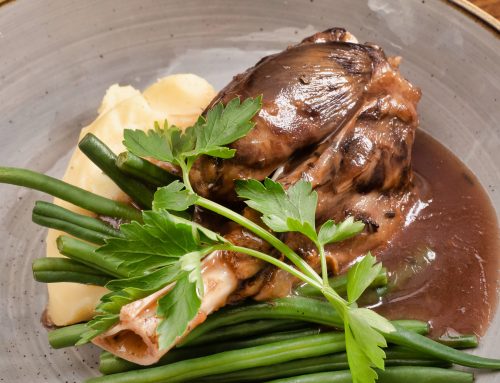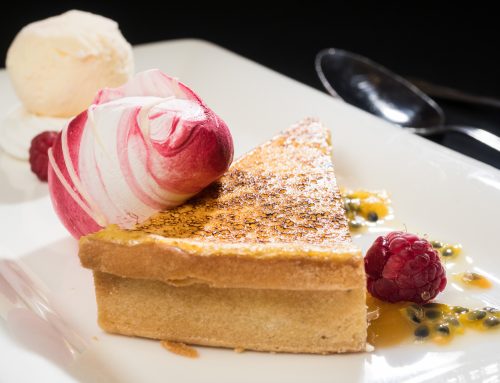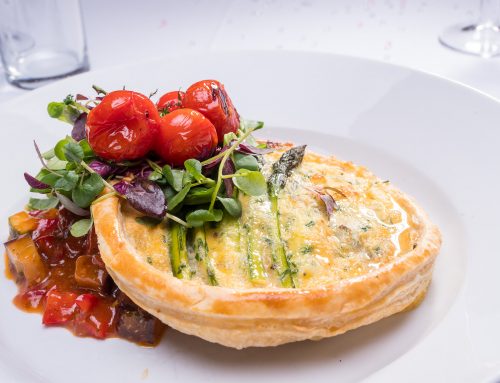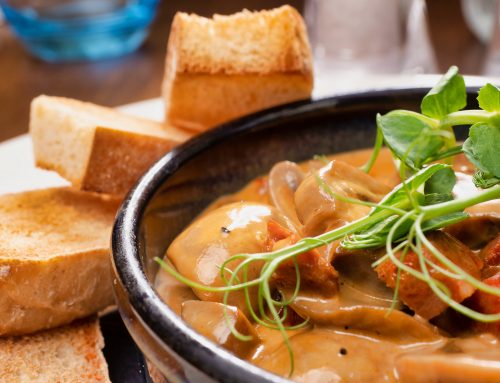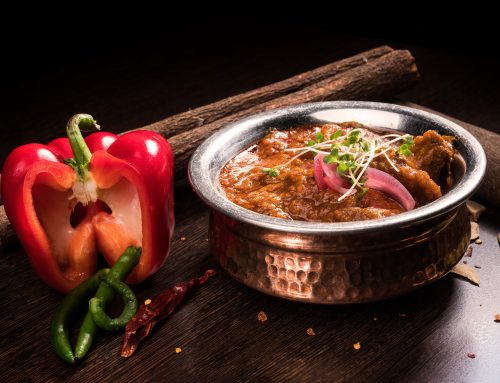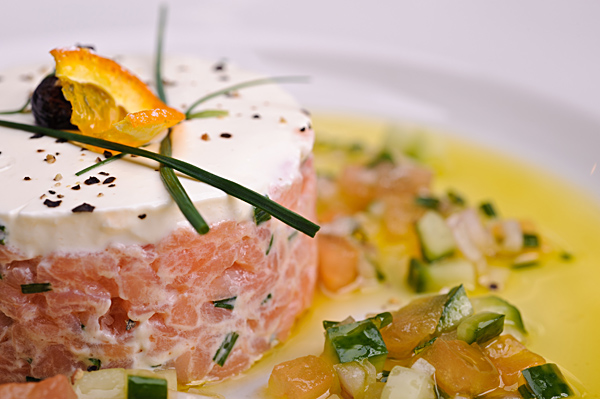
Of all the subjects I photograph, I tend to find food photography more demanding than most. The chef wants it to convey everything he’s put into the preparation, along with detail and texture. The ambience of the restaurant has to register too, with a feeling the food belongs in that particular setting.
Of course, the image has to look tempting and fresh too. Some foods can start to look tired very, very quickly, particularly some Indian dishes. If I’m told by a viewer they feel hungry, then it’s a winner.
I often start with a 120cm folding octabox boomed over the table. This provides the main light that tends to pick up the specular highlights in the sauce etc. I then use a second light to one side to pick up the texture. This tends to be more controlled and can be a beauty dish, standard reflector or a smaller softbox. Whichever I choose, it’ll always be gridded in some fashion, so as to tightly control the fall of light and really lift the texture for that three dimensional look.
In these photographs, I made use of a 60x60cm folding softbox with fitted grid. The size is ideal for close up food work, as there’s no real need to have a large pool of light, and a smaller ‘box is easier to control. The light is provided by a Lencarta Safari Classic. Two heads firing at minimal power.
In the above image, you can see the light from the overhead octabox catching the top of the fruit and cucumber in the foreground (right of frame). The smaller softbox is camera right and only just above table level. You can see the shadowing across the surface of the salmon tartar and in the small piece of orange on top.
Nikon D3 1/125th sec ISO200 60mm Micro Nikkor f10
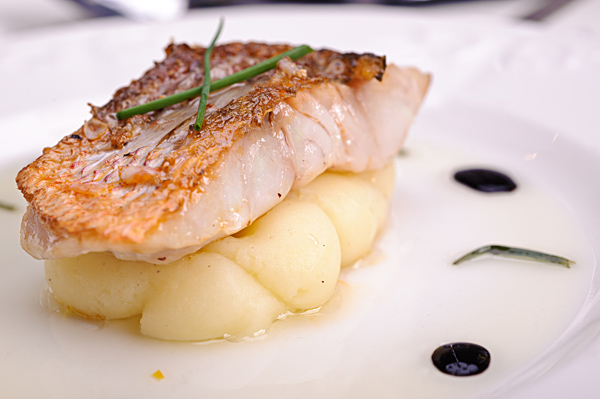
In this image, the texture of the cooked skin on the redsnapper is picked up by the gridded softbox camera right, with the cooked white flesh also catching the light. You can see the gridded softbox in the black dot in the bottom right of the frame, and this is where the grid can help reduce the appearance of lens flare, as I’m shooting almost directly towards the softbox. I also tend to focus manually, a habit I never really got out of from my film camera days. The lens I tend to use mostly for food photography is the 60mm Micro Nikkor, not the new one, but the original. It’s a great lens, but a bit feckless when it comes to auto focus. Always been that way, and I don’t think it was restricted to my version of the lens, to be honest. Having said that, I tend to prefer manual focus for macro work anyway, although I can’t really say if that’s down to the inefficiencies of the lens, or whether it’s a hang over from my earlier days with the likes of the Canon A1 and Nikon F3, and all those lovely manual focus lenses!
Nikon D3 1/125th sec ISO200 60mm Micro Nikkor f10
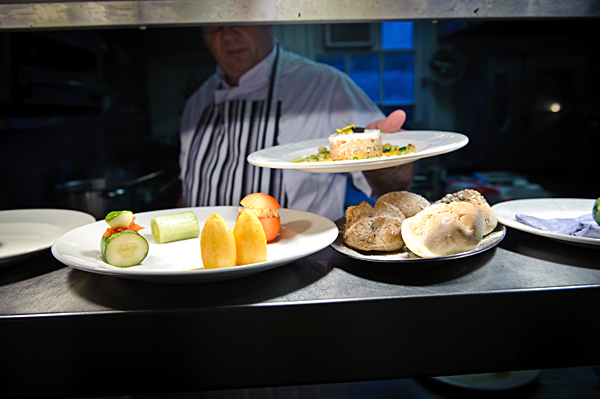
Nothing fancy for this one, just a simple grabbed shot as the food was about to be transferred to the table. No flash, just ambient, and a switch to my trusty 24-70mm f2.8 Nikkor.
Nikon D3 1/400th sec ISO400 24-70mm f5
This assignment was for Bartle Hall and their fabulous New Year celebration menu.
Training courses for food photography are available via www.focalpointpro.co.uk
